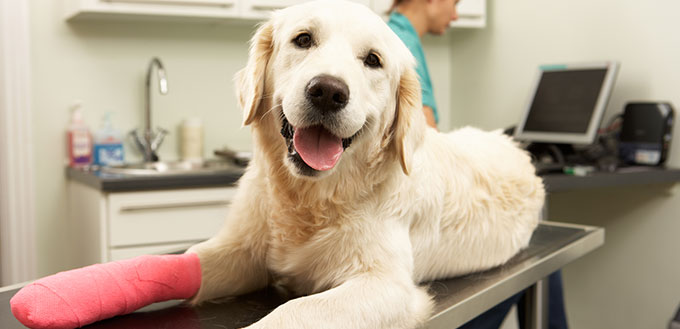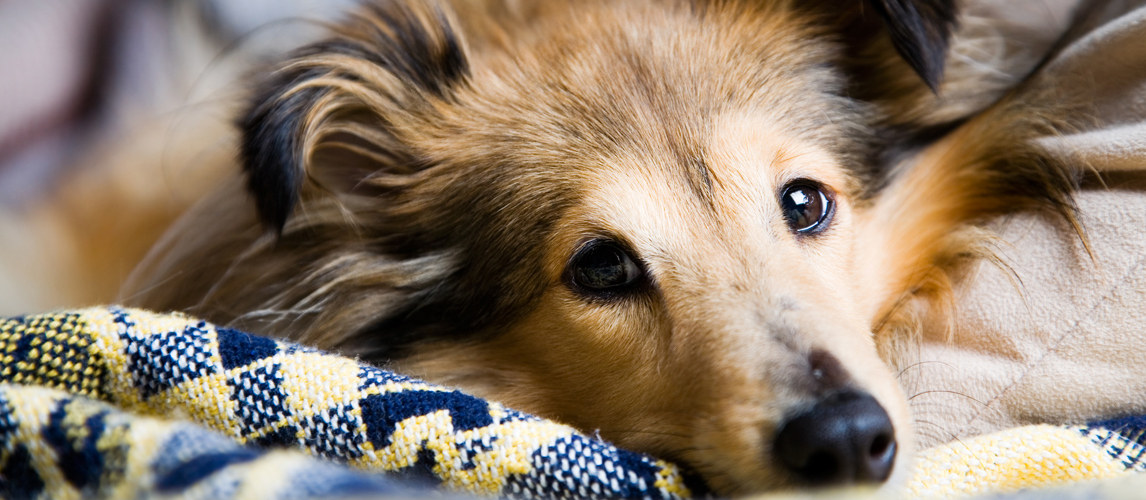As much as you take care of your dog, accidents can happen and so it is important to know what to do. While more serious injuries must be treated by a vet, there are some home care treatments you can do if your dog presents with a minor wound.
From knowing when to seek veterinary attention to the first aid kit you need and what can you put on a dog wound, we take a look at how to clean a canine injury.
Assess the Wound
While it may be a shock to see your pooch injured, it is important to remain calm so you can assess the wound. Knowing when you should take your dog immediately to the vet and the types of minor open wound on dogs you can safely treat at home is your first step. Get your pet to a veterinarian pronto if:
- Bone is showing through or the wound clearly needs suturing
- It is a large or deep, especially if it is a bite wound
- The wound is bleeding profusely or is ‘pumping’, which could indicate a severed vessel or artery
- The skin around the wound is red and puffy or there are visible signs of pus, indicating an infected dog wound
- The injury involves a large area of your dog’s body or affects sensitive areas such as their eyes
As long as your dog is otherwise well and uninjured, smaller or superficial wounds can be treated at home, following our how to clean a dog’s wound guide:
Make Sure you Have a First Aid Kit
Having a fully stocked pet first aid kit at home and in the car essential as you simply never know when you will need it. The best dog first aid kit should include sterile bandages, bandage scissors, syringe, elastic bandage wrapping, tape, saline cleaning solutions, sterile cleaning pads and an antiseptic solution such as 2% chlorhexidine. A water-based lubricant such as KY jelly and antibacterial/antibiotics ointments are also a good idea to have. Make sure the first aid bag or container is intact and closes securely and that all the contents of the kit are sealed and in date.
Calm and Secure Your Pet
You need a still and calm dog to clean their wound so if you can, ask for help in restraining and reassuring your dog. Smaller dogs can be popped onto a table in front of you, or for larger dogs, you will need to get down on the ground next to them. You should also consider using a muzzle as even the gentlest of dogs can snap at you if they are scared or in pain.
Apply Pressure to Stop any Bleeding
If the wound is bleeding, then you may need to apply pressure to stop it. Depending on the size of the wound, place a sterile piece of gauze or a clean towel on top of the wound site and gently press down, to enable the small blood vessels to clot and slow the bleeding right down. If the bleeding doesn’t slow or is pumping profusely, get your dog to a veterinarian as soon as you can.
Clip hair around the Wound
Before cleaning the wound, it is a good idea to trim back the fur around the wound edge, to reduce any further contamination of the injured site. Spreading a little water-based lubricant around the wound will make trimming easier for both you and your dog before you use either clippers, scissors or a disposable razor to carefully trim that fur back. Make sure you then gently wipe the lubricant and hair away.
You May Also Like: Dog Nail Clippers
Clean the Wound
Even if the wound is small, bacteria, dirt and debris can still get into the wound site and under your dog’s skin and if not cleaned away can quickly lead to a nasty infection. And when it comes to cleaning a wound, plain tap water or a mild saline (salt) solution are more than up to the job. Using a syringe, fill it with water and spray the liquid into the wound site to flush out any dirt or bacteria. At this point, if you can see any larger objects such as gravel or twigs, use a sterile pair of tweezers to gently pluck them out. Repeat the flush a few times, then wipe the wound with warm water and pat dry with a clean paper towel.
Can I Put Hydrogen Peroxide on My Dog?
It is important not to use hydrogen peroxide solution when it comes to dog wound care. Hydrogen peroxide can be very irritating to your dog’s skin and can actually slow down your dog’s ability to naturally heal the wound by killing of the cells he needs. Once you have cleaned the wound, a mild disinfectant, such as betadine or chlorhexidine are the go-to solutions for your pet.
Apply a Thin Layer of Antibiotic Ointment
Once you have flushed and disinfected the wound, a thin layer of antibiotic ointment will prevent any bacteria entering the wound and set it on its road to healing. Neosporin for dogs is actually a human antibiotic that is good for minor wounds and can be safely used with canines in small amounts. But it is important to avoid any antibiotics that also contain corticosteroid, such as hydrocortisone as it can be poisonous if ingested by your pet. When it comes to treating dog wounds naturally, calendula is alternative antibiotic cream to use.
Prevent Your Dog from Licking the Wound
Once the wound has been cleaned and treated, you don’t want your dog re-infecting it by licking the wound site. If you can, prevent your dog from licking the wound for at least 10 minutes after applying antibiotics so that the cream can do its work. A clean cloth bandage or one of the easy to apply liquid bandages for dogs are another good way to keep the wound clean, but you will need to monitor your dog, and regularly change the dressing. If in any doubt, speak to your vet to get a dog cone collar or surgical dog suit keep them from getting near to the wound as it heals.
Post Wound Care and When to Seek Help
Ongoing care is essential when it comes to how to heal a dog wound fast. And this includes cleaning with tap or salt water several times a day and re-dressing if necessary until it starts to cleanly heal over. When cleaning the wound, keep an eye out for signs of infection, including skin redness, swelling or discharge as well as signs that things are not well with your pet, such as lethargy, pain, loss of appetite and fever.
Most minor wounds should start to recover after a few days so if you are in any doubt or your pet’s wound appears to be deteriorating, make an appointment with your veterinarian as they may well need antibiotics or further treatment intervention.
Sources:
- Should Dogs Lick Wounds To Heal Them? – American Kennel Club
Note: The advice provided in this post is intended for informational purposes and does not constitute medical advice regarding pets. For an accurate diagnosis of your pet's condition, please make an appointment with your vet.









